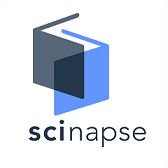Solar Radiation Forecasting Using LSTM and PeepHole LSTM Deep Learning Models: A Case of Kishapu District, Tanzania
Abstract
Many countries around the globe, including Tanzania, are investing in renewable energy, partly because of the need to increase electric power generation and meet the ever-increasing electricity demands, and partly because of the need to combat global climate change caused by carbon emissions from fossil fuel-based electricity production. Kishapu Solar Project, located in Kishapu District, Shinyanga Region, Tanzania, is one of the renewable energy projects with a planned generation of 150 MW of electric power once completed, using solar photovoltaic technology. Accurate forecasting of solar radiation is important in managing and maintaining solar energy plants. Inaccurate forecasting of solar radiation can lead to poor harvest of solar energy and poor management of solar energy plants, which directly impacts electricity contribution to the national electricity grid. Long Short-Term Memory (LSTM) and its variant, PeepHole LSTM, are examples of Deep Learning models that can be used to predict solar radiation. The purpose of PeepHole LSTM is to introduce “peephole” connections in the LSTM model, which allow LSTM gates to directly inspect memory cell state and hence have richer information to process. However, there is still a research gap on the impact of “peephole” connections on the prediction performance of the LSTM model, especially in the context of forecasting solar radiation in Kishapu District, where the Kishapu Solar Project is located. The purpose of this study is to fill this research gap by developing both LSTM and PeepHole LSTM models and comparing their performances in forecasting solar radiation in Kishapu District. The 14-year Kishapu District daily solar radiation (Downward Shortwave Radiation) dataset was first pre-processed by scaling (normalizing) it using Standard Scaler and then split into training set (the first 70%), validation set (the next 15%) and test set (the last 15%) before being utilized to train and test the developed LSTM and PeepHole LSTM models. Both LSTM and PeepHole LSTM models used the previous 5 days' solar radiation values as inputs to predict the output (next day (6th day) solar radiation value). The trained and better-performing model between the two was finally saved in .h5 format and integrated with a Gradio based Web Application to provide a user interface for officials in Kishapu District and at Kishapu Solar Project to predict daily solar radiation. The findings from performance evaluation revealed that the LSTM model outperformed the PeepHole LSTM model in predicting solar radiation by achieving test Mean Absolute Error (MAE) and Root Mean Squared Error (RMSE) scores of 26.22 W/m2 and 36.65 W/m2, respectively, compared to MAE and RMSE scores of 30.84 W/m2 and 41.88 W/m2, respectively, achieved by the PeepHole LSTM model, concluding that “peephole” connections reduce the performance of the LSTM model rather than increasing it when used to forecast solar radiation in Kishapu District. This study’s recommendation to Artificial Intelligence (AI) software developers and researchers is to use the LSTM rather than the PeepHole LSTM Deep Learning model when forecasting solar radiation in Kishapu District and in locations with similar climatic conditions
Downloads
References
Gopi, A., Sharma, P., Sudhakar, K., Ngui, W. K., Kirpichnikova, I., & Cuce, E. (2023). Weather Impact on Solar Farm Performance: A Comparative Analysis of Machine Learning Techniques. Sustainability, 15(1), 439. DOI: https://doi.org/10.3390/su15010439
Seyam, S., Dincer, I., & Agelin-Chaab, M. (2020). Development of a clean power plant integrated with a solar farm for a sustainable community. Energy Conversion and Management, 225, 113434. DOI: https://doi.org/https://doi.org/10.1016/j.enconman.2020.113434
Bandaru, S. H., Becerra, V., Khanna, S., Espargilliere, H., Torres Sevilla, L., Radulovic, J., Hutchinson, D., & Khusainov, R. (2021). A General Framework for Multi-Criteria Based Feasibility Studies for Solar Energy Projects: Application to a Real-World Solar Farm. Energies, 14(8), 2204. DOI: https://doi.org/10.3390/en14082204
Pedersen, R. H., & Poncian, J. (2024). The political economy of energy transitions in Africa: Coalitions, politics and power in Tanzania. Energy Research & Social Science, 117, 103712. DOI: https://doi.org/10.1016/j.erss.2024.103712
Poncian, J., & Pedersen, R. H. (2023). Resource nationalism and energy transitions in lower-income countries: the case of Tanzania. Review of African Political Economy, 50(177-178), 355- 373. DOI: https://doi.org/10.1080/03056244.2023.2287878
Sharma, G., Chandra, S., Yadav, A. K., & Gupta, R. (2025). Enhancing solar radiation forecasting accuracy with a hybrid SA-Bi-LSTM-Bi-GRU model. Earth Science Informatics, 18(3), 1-26. DOI: https://doi.org/10.1007/s12145-025-01791-3
Hochreiter, S. & Schmidhuber, J. (1997). Long short-term memory. Neural Comput.,9, 1735–1780
Gers, F. A., Schraudolph, N. N., & Schmidhuber, J. (2002). Learning precise timing with LSTM recurrent networks. Journal of Machine Learning Research, 3, 115-143.
Zaheer, S., Anjum, N., Hussain, S., Algarni, A. D., Iqbal, J., Bourouis, S., & Ullah, S. S. (2023). A Multi-Parameter Forecasting for Stock Time Series Data Using LSTM and Deep Learning Model. Mathematics, 11(3), 590. DOI: https://doi.org/10.3390/math11030590.
Suebsombut, P., Sekhari, A., Sureephong, P., Belhi, A., & Bouras, A. (2021). Field Data Forecasting Using LSTM and Bi-LSTM Approaches. Applied Sciences, 11(24), 11820. DOI: https://doi.org/10.3390/app112411820
Manowska, A. (2020). Using the LSTM Network to Forecast the Demand for Electricity in Poland. Applied Sciences, 10(23), 8455. DOI: https://doi.org/10.3390/app10238455
Salamanis, A., Xanthopoulou, G., Kehagias, D., & Tzovaras, D. (2022). LSTM-Based Deep Learning Models for Long-Term Tourism Demand Forecasting. Electronics, 11(22), 3681. DOI: https://doi.org/10.3390/electronics11223681
Leščešen, I., Tanhapour, M., Pekárová, P., Miklánek, P., & Bajtek, Z. (2025). Long Short-Term Memory (LSTM) Networks for Accurate River Flow Forecasting: A Case Study on the Morava River Basin (Serbia). Water, 17(6), 907. DOI: https://doi.org/10.3390/w17060907
Yang, H., Hu, J., Cai, J., Wang, Y., Chen, X., Zhao, X., & Wang, L. (2023). A new MC-LSTM network structure is designed for regression prediction of time series. Neural Processing Letters, 55(7), 8957-8979. DOI: https://doi.org/10.1007/s11063-023-11187-3
Essai Ali, M. H., Abdellah, A. R., Atallah, H. A., Ahmed, G. S., Muthanna, A., & Koucheryavy, A. (2023). Deep Learning Peephole LSTM Neural Network-Based Channel State Estimators for OFDM 5G and Beyond Networks. Mathematics, 11(15), 3386. DOI: https://doi.org/10.3390/math11153386
Latif, S., Javaid, N., Aslam, F., Aldegheishem, A., Alrajeh, N., & Bouk, S. H. (2024). Enhanced prediction of stock markets using a novel deep learning model, PLSTM-TAL, in urbanized smart cities. Heliyon, 10(6), e27747. DOI: https://doi.org/10.1016/j.heliyon.2024.e27747
Rahman, M. M., & Siddiqui, F. H. (2021). Multi‐layered attentional peephole convolutional LSTM for abstractive text summarization. Etri Journal, 43(2), 288-298. DOI: https://doi.org/10.4218/etrij.2019-0016
Tang, F. (2025). Short-term wind power prediction based on an improved sparrow search algorithm optimized long short-term memory with peephole connections. Wind Engineering, 49(1), 71-90. DOI: https://doi.org/10.1177/0309524X241257429
Muñoz-Sabater, J., Dutra, E., Agustí-Panareda, A., Albergel, C., Arduini, G., Balsamo, G., ... & Thépaut, J. N. (2021). ERA5-Land: A state-of-the-art global reanalysis dataset for land applications. Earth system science data, 13(9), 4349-4383. DOI: https://doi.org/10.5194/essd-13-4349-2021
Tamiminia, H., Salehi, B., Mahdianpari, M., Quackenbush, L., Adeli, S., & Brisco, B. (2020). Google Earth Engine for geo-big data applications: A meta-analysis and systematic review. ISPRS Journal of Photogrammetry and Remote Sensing, 164, 152-170
Huntington, J., Hegewisch, K., Daudert, B., Morton, C., Abatzoglou, J., McEvoy, D., & Erickson, T. (2017). Climate engine: Cloud computing and visualization of climate and remote sensing data for advanced natural resource monitoring and process understanding. Bulletin of the American Meteorological Society, 98(11), 2397-2410
Franceschini, G., Khan, A., Moretti, L., Nyabuti, K., Asif, M., Bezuidenhoudt, E. & Morteo, K. (2025). The Global Administrative Unit Layers (GAUL) 2024. Technical Guidelines. Rome, FAO. DOI: https://doi.org/10.4060/cd4262en
Medsker, L. R., & Jain, L. (2001). Recurrent neural networks. Design and Applications, 5(64-67), 2.
Hochreiter, S. (1998). Recurrent neural net learning and vanishing gradient. International Journal of Uncertainity, Fuzziness and Knowledge-Based Systems, 6(2), 107-116.
Ferreira, R., Canesche, M., Jamieson, P., Neto, O., & Nacif, J. A. (2024). Examples and tutorials on using Google Colab and Gradio to create online interactive student‐learning modules. Computer Applications in Engineering Education, 32(4), e22729. DOI: https://doi.org/10.1002/cae.22729
Bisong, E. (2019). Google Colaboratory. In Building machine learning and deep learning models on google cloud platform: a comprehensive guide for beginners. Berkeley, CA: Apress.
Copyright (c) 2025 Isakwisa Gaddy Tende

This work is licensed under a Creative Commons Attribution 4.0 International License.




























